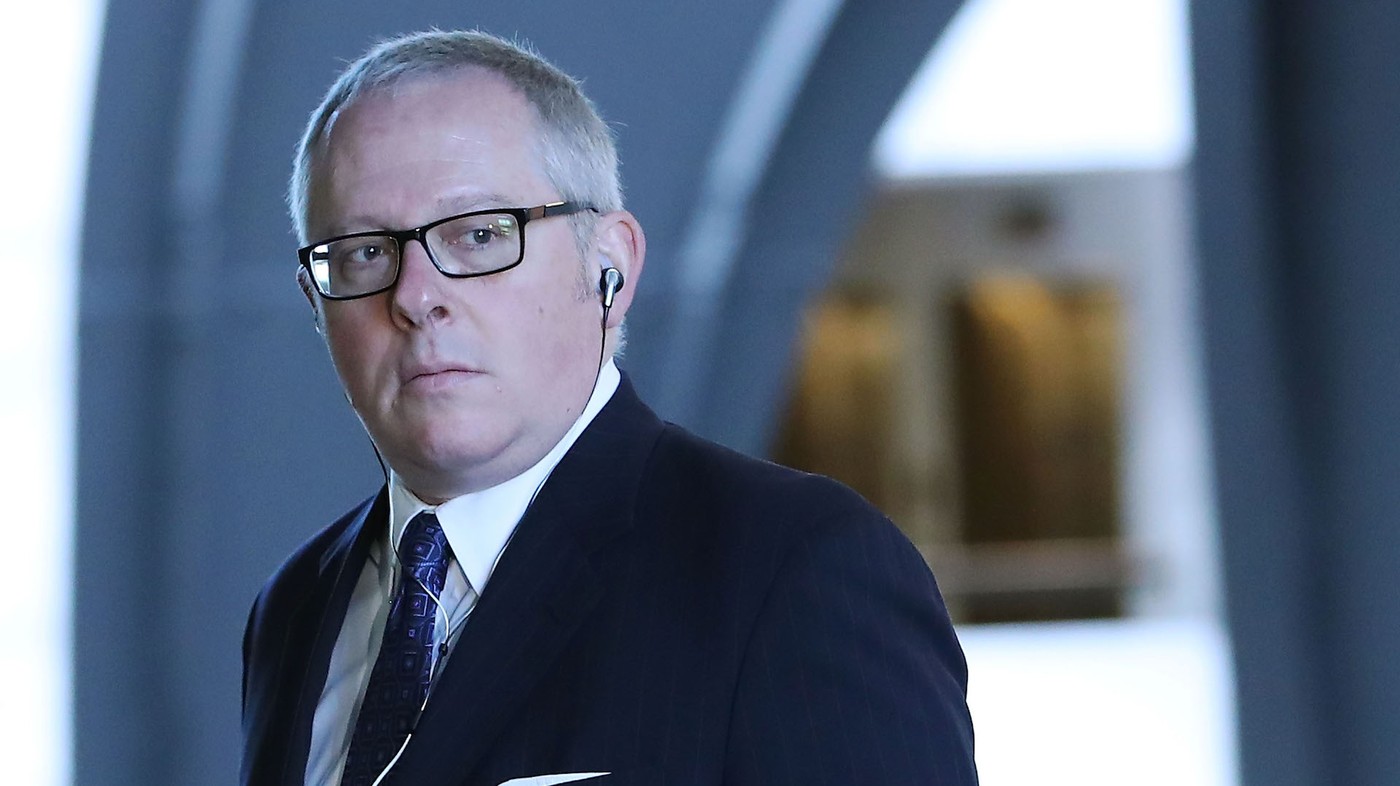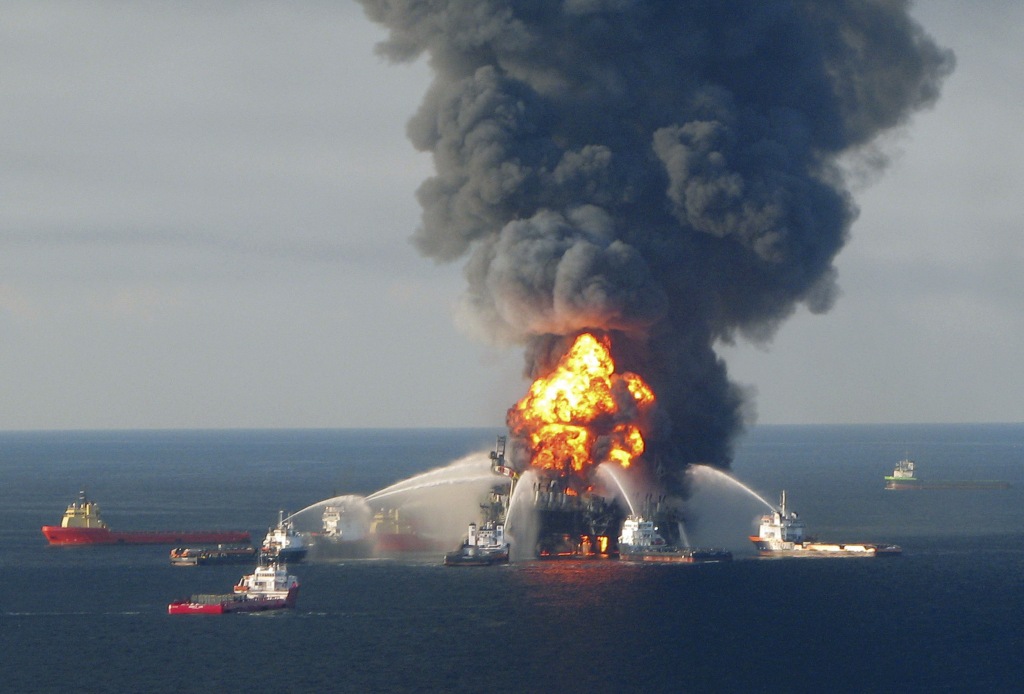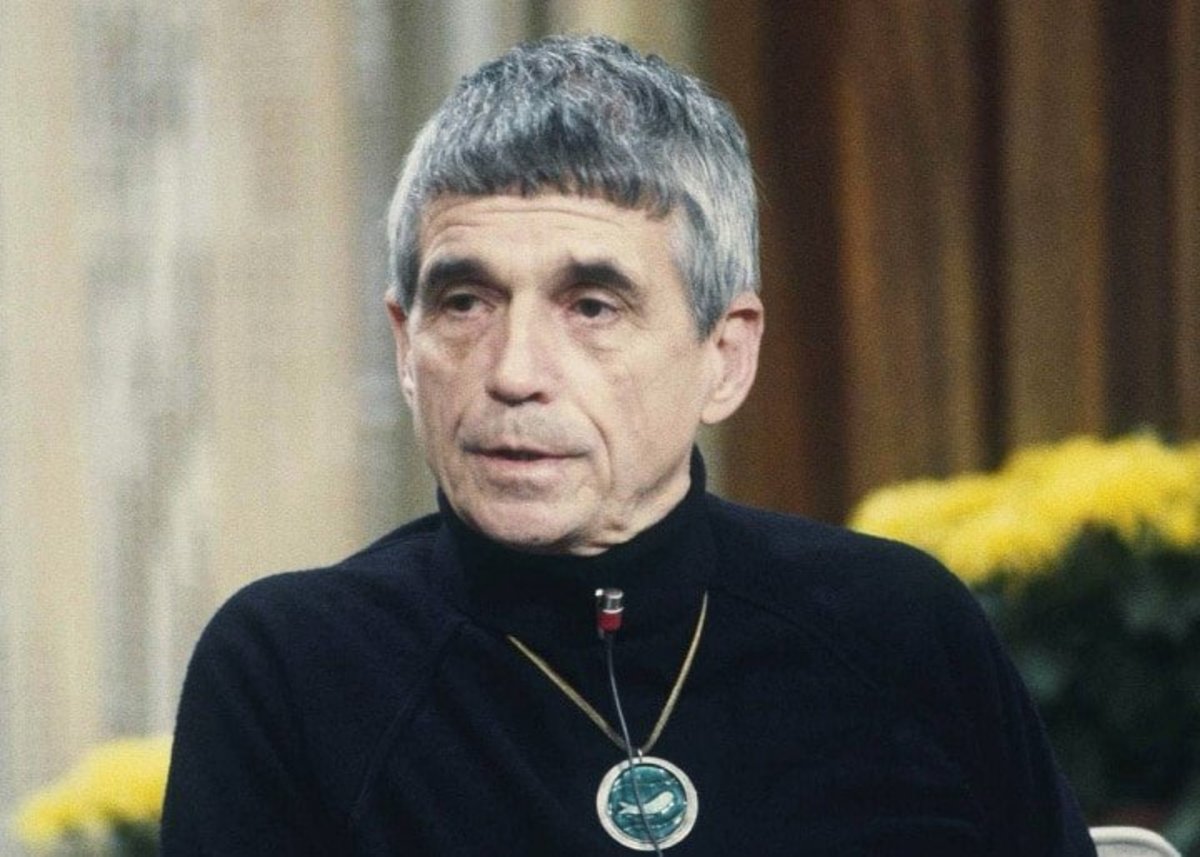“The quality is terrible,” said one federal prison staffer of the KN95 he received. “I don’t even know where they got ’em from.”
By Keegan Hamilton and Daniel Newhauser Apr 21 2020
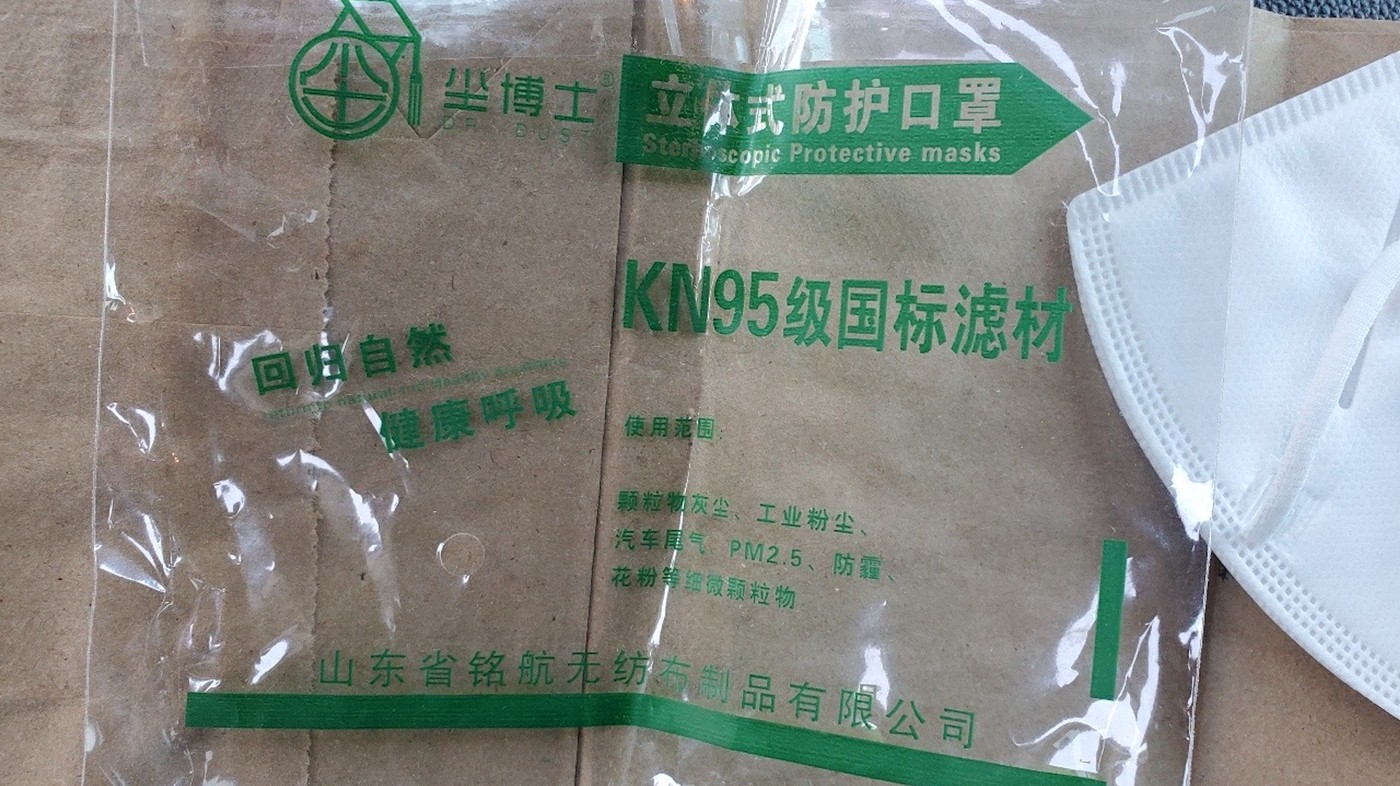
Packaging from the KN95 mask supplied to Ray Coleman. Courtesy of Coleman.
Ray Coleman was incredulous when a manager ordered him to throw away his N95 respirator moments after he was fitted to wear it. Coleman, a literacy coordinator at FCI Tallahassee, a low-security federal prison with about 900 inmates in the Florida Panhandle, says he was told that his respirator had expired but replacements would be arriving soon.
Coleman knew there was a national shortage of N95 respirators, which are the best-known protection against inhaling the coronavirus. With demand soaring, some front-line healthcare workers have resorted to wearing cloth coverings over their faces because they’re unable to obtain N95s.
“I’m reading in the news about how hard N95s are to come by,” Coleman, who is also the president of the prison’s union for correctional officers and staff, told VICE News. “We only had like 60 left on hand. Then all of a sudden they said, ‘We’re getting thousands of masks in.’ I’m like, where are we getting these? I think y’all getting hustled.”
When Coleman got a look at the new masks last week, he didn’t like what he saw. They were KN95s, a controversial Chinese-made version of the N95. While KN95s can be a suitable alternative, the U.S. market has been flooded by knockoff versions made from low-quality materials that aren’t certified by the U.S. Food and Drug Administration.
The FDA has created a special process to verify KN95 masks and updates a list of permitted manufacturers almost daily. But Coleman said his mask resembles one on a different list: a list of suspected fakes, maintained by the Centers for Disease Control and Prevention.
“This is a counterfeit mask,” Coleman recalled thinking. “This mask is from China. It’s not approved. This is what they're sending our law enforcement officers? They’re using us to test masks? That’s not good.”
Staff and union officials are furious at the Federal Bureau of Prisons’ leadership, alleging that the lack of preparation and disjointed response has led to dangerous working conditions and allowed the coronavirus outbreak to spiral out of control in prisons. Nearly 500 inmates and more than 300 staff have tested positive for COVID-19 at 59 BOP facilities across the country. Twenty-two inmates have died.
Initially, BOP staff allege, some staff were ordered not to wear any masks at all. Then when masks became required, there weren’t enough to go around. Now, workers claim, staff have been given dubious KN95s rather than trusted N95s.
Even “hotspot” prisons still don’t have enough respirators — even KN95s — and other PPE, said Joe Rojas, the Southeast regional vice president for the Council of Prison Locals C-33, a branch of the American Federation of Government Employees that represents more than 30,000 unionized federal prison staffers.
At FCC Yazoo City in Mississippi, where at least 71 inmates and four staff members are infected, Rojas said some correctional officers are still being issued regular surgical masks, which offer nowhere near the same level of protection as respirators.
“It’s an F-rated failure,” Rojas said of the BOP’s coronavirus response. “It’s disgusting, it’s reckless, and it’s a failure.”
Do you know something about the Bureau of Prisons? We'd love to hear from you. Contact the reporter at keegan.hamilton@vice.com or keegan.hamilton@protonmail.com.
Government contracting records show the BOP began shopping for KN95s in early April, shortly after the FDA cleared KN95s for use in healthcare settings — if the manufacturer provides verification that the respirators are functional.
Coleman shared photos of his mask with VICE News, including a label that says it was manufactured in March by Hunan Royal Crown Medical Products Co. Ltd. That company does not appear on the FDA’s list of Chinese companies that have authenticated their KN95s. Coleman says the KN95 he was given resembles one listed by the CDC as fake, but Hunan Royal Crown is not listed among the CDC’s suspected counterfeit respirator manufacturers.
“The quality is terrible,” Coleman said. “You can just feel it. I don’t even know where they got ’em from.”
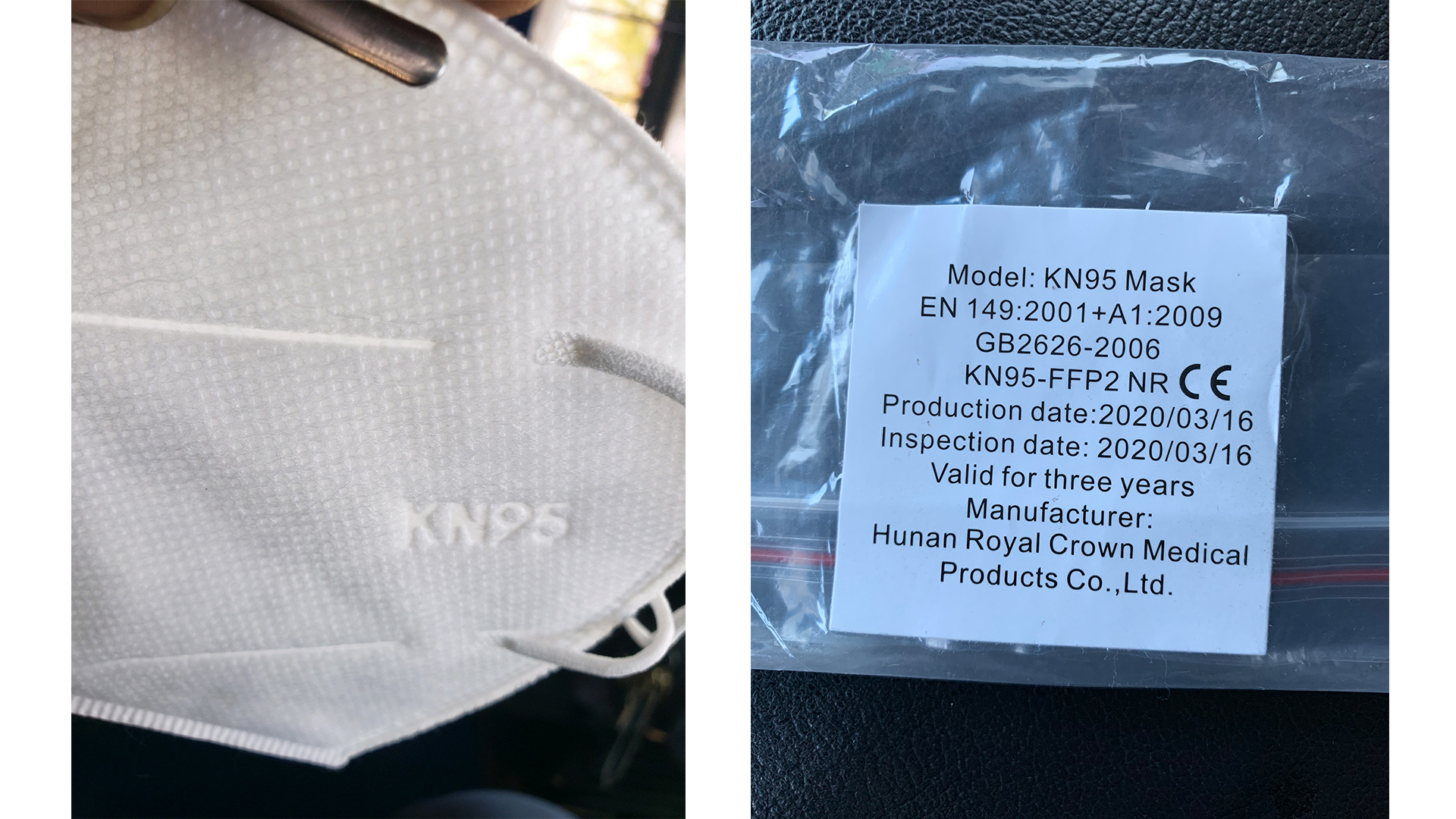
LEFT: THE MASK GIVEN TO RAY COLEMAN. RIGHT: THE LABEL ON COLEMAN'S MASK.
There’s virtually no information available online about Hunan Royal Crown, and Chinese corporate registry information reviewed by VICE News indicates the company was created barely a month ago for the sole purpose of manufacturing masks. The CDC and FDA did not immediately respond to questions about whether the Hunan Royal Crown mask appears on the CDC's counterfeit list, and the company was not reachable for comment.
Many similar manufacturers have sprung up across China to fill the demand, and U.S. buyers have struggled to confirm the quality of their products.
Some 48,000 KN95s sent to first responders in Missouri were recalled earlier this month after testing proved they didn't meet safety standards. And in Illinois, officials reversed course after buying $17 million worth of KN95s, warning that KN95 masks “may not meet performance standards” and counterfeits are “flooding the marketplace.” The state’s health department is now recommending agencies stop distributing KN95s that are not explicitly FDA-approved.
READ: Trump blacklisted this Chinese company. Now it’s making coronavirus masks for U.S. hospitals.
Coleman filed a complaint against FCI Tallahassee with the Occupational Safety and Health Administration on April 14 stating that employees had been sounding the alarm about PPE shortages for over a month. The complaint alleges that staff transporting sick inmates to the hospital were not provided with N95 masks. One staff member at FCI Tallahassee has tested positive for COVID-19, according to the BOP.
“Masks have not been issued to employees who are charged with the 24/7 monitoring of the quarantine and isolation of nearly 70 inmates,” Coleman wrote. “Instead the agency is forcing staff to dispose of N95s after fit-testing.”
The national president of the union for BOP staff filed a separate OSHA complaint on March 31, also alleging that the agency “failed to provide the proper N95 masks to staff,” including instances when officers were around sick inmates. Three employees at FCI Oakdale in Louisiana, where seven inmates have died from COVID-19, have joined a class-action lawsuit against the federal government, alleging they were exposed to the virus because they lacked proper gear. One Oakdale officer alleges he was only issued gloves — no mask — when transporting a sick prisoner to the hospital for testing. That prisoner later died from COVID-19.
With N95s in short supply, several federal prisons turned to KN95 masks. Yazoo City bought 30,000 “KN95 disposable facemasks, one-size fits all,” for $98,700 from a company named ML Click Marketing on April 6. Aaron Tucker, the Phoenix-based company’s vice president, told VICE News he also sold KN95 masks to Coleman’s prison in Tallahassee.
But Tucker isn’t sure the masks he sold the prisons are the same ones employees are complaining about. That’s because Tucker has never actually seen the masks. His company serves as a middleman, sending stock directly from manufacturers to the prisons, he said.
Tucker's company, which also goes by the trade name True Uniform, usually sells items like T-shirts, boxer shorts, socks, and soap to federal prisons and other government entities. But as the coronavirus crisis worsened, he said, his customers started asking for masks just as his trusted suppliers told him they could source KN95s from manufacturers in China.
“We'd never sold masks until this thing came out,” Tucker said. “People started asking around whether or not we could get them, and the answer was yes.”
Tucker’s suppliers provided him with FDA certification documents for mask manufacturers that bear a name different than “Hunan Royal Crown.”( He declined to provide that name, the certificates, or contact information for his supplier.) But Tucker now wonders whether he’s fallen victim to a “bait and switch” — or if the prisons got these KN95 masks elsewhere.
“We're kind of learning this as we go,” he said. “It was just the Wild West out there for the first, you know, couple of weeks. People were scrambling to find anything. I plan on reaching out to the representatives at Tallahassee to ask if we have a problem.”
Federal contracting records show ML Click selling around $311,000 worth of “COVID-19 PPE” to the BOP’s Northeast Regional Office on April 1, but a union official told VICE News that staff in that region has not yet reported receiving KN95 masks.
ML Click also received a contract worth nearly $49,000 to supply “hand sanitizer and KN95 face masks” to the BOP’s Federal Transfer Center in Oklahoma City, which is a hub for inmates being moved around the country. The staff union president at the facility was not aware of the purchase and said workers have not been issued KN95 masks and were instead wearing another type of respirator when interacting with sick inmates.
The U.S. Marshals Service, which transports federal prisoners, placed an order for around $1,000 worth of KN95s on April 1 from a company called Buy Smart LLC, which advertises office supplies and cleaning products on its website. The company did not respond to multiple calls from VICE News.
The Department of Justice did not respond to an inquiry from VICE News asking whether any steps had been taken to verify the authenticity of KN95 supplied to federal law enforcement agencies, and whether other agencies beyond the BOP and Marshals Service had bought them.
BOP spokesperson Sue Allison responded to a detailed list of questions about the KN95 purchases and other issues with the agency’s PPE supply by saying the agency “began issuing masks/face coverings to all institution staff and fit-testing for use of N-95 masks” on April 4, after the CDC recommended wearing masks in public.
“Let me assure you, we have a sufficient quantity of personal protective equipment,” Allison said. “Staff have been advised to follow procedures and be responsible in how and when we use it. We are monitoring the inventory closely.” She added, “Our contracting staff continue to make purchases daily to ensure we maintain our inventories.”
As Chinese manufacturers have ramped up production of respirator masks, U.S. regulators have struggled to keep pace. As previously reported by VICE News, the first KN95 manufacturer certified by the FDA was BYD, a Chinese electric-vehicle company with a history of supplying allegedly defective products to U.S. taxpayers, as well as possible links to forced labor, though BYD denies both claims and is not linked to the masks sent to U.S. prisons. VICE News also documented how Chinese drug traffickers are getting into the mask game by using phony FDA certificates to dupe would-be customers.
“It was just the Wild West out there for the first, you know, couple of weeks. People were scrambling to find anything.”
Matthew Solomon, an FBI special agent who supervises a task force that investigates fraud and other economic crimes, said the agency has received over a thousand complaints about bogus PPE and other coronavirus-related scams since the outbreak began.
When VICE News described the situation with ML Click and the KN95s supplied to the BOP, Solomon replied, “If there was some sort of ‘bait and switch’ where perpetrators were offering a mask or PPE that was certified by one of the major providers that are based in the U.S. and it turned out not to be that, of course the FBI would be interested.”
The DOJ’s Office of the Inspector General is reportedly investigating the BOP’s handling of the coronavirus outbreak, and U.S. lawmakers are also demanding answers. In an April 13 letter to Attorney General William Barr and BOP Director Michael Carvajal, Florida Reps. Val Demings and Debbie Mucarsel-Powell said they had received “alarming reports” about federal prisons not providing PPE to staff and “ignoring basic guidance” from the CDC.
“Employees at correctional institutions in Florida have conveyed that there is a shortage of gloves and the supply of available masks severely lacking,” Demings and Mucarsel-Powell wrote, noting that Congress recently allocated $100 million to the BOP specifically to buy PPE and respond to the outbreak.
Rep. Karen Bass, a California Democrat who has criticized the BOP’s handling of the outbreak, said that without Congress in session, “we're having a real problem with oversight right now.”
“I'm worried that after having worked so many years on criminal justice reform, that we're getting ready to reduce our prison population, but we're going to reduce our prison population through death,” Bass said. “And I just think that is just completely unacceptable.”
Some BOP staffers say they were under orders not to wear any masks at all until early April. VICE News obtained a letter sent from a correctional officer to the warden of U.S. Penitentiary Coleman, part of a large federal prison complex in Florida, in which the officer says his captain told him not to wear an N95 on duty. The officer expressed concern about contracting the virus and bringing it home to family members with underlying medical conditions.
“I’m only doing what any responsible person would do,” the officer wrote. “I’m taking extra precautions not to bring anything in or out of the facility. I was told I could not work while wearing the mask. Being proactive should not be a punishment.”
At least one inmate and three staff members at the Coleman complex have tested positive for COVID-19 and 1,000 inmates at the low-security facility there are currently under quarantine after possible virus exposure, according to an email to prison staff obtained by VICE News.
One staff member at FCC Coleman told VICE News they were instructed last month by the complex warden to remove their mask while working at the facility. A regional BOP official said the policy against wearing masks came from “Central Office” or agency headquarters in Washington, according to a text message exchange obtained by VICE News.
The FCC Coleman staff member, who requested anonymity because they are not authorized to speak to the media, said the deputy attorney general sent a memo to DOJ employees last week reversing the policy and mandating the use of masks, but the change came too late.
“It could have been prevented,” the FCC Coleman staffer said. “If they would have let us wear masks when we wanted to, the inmates wouldn’t have gotten sick. The inmates didn't get it from visitors. We’re the ones going to stores. We're not socializing, but we're out in society.”
FCC Coleman recently received a shipment of 4,000 KN95 masks, the source said, but could not offer any details about cost or model.
Charles Jones, a correctional officer at FCI Marianna, a medium-security prison in Florida, said his facility also received KN95 masks in recent weeks. A photo he sent of the packaging indicates the masks were made by a company not listed by the FDA as a certified manufacturer of KN95 respirators.
Jones, who serves as the local union president, does fit-testing of staff for respirators and expressed concern about the new masks. “They’re saying they’re FDA-approved, but it’s got this Chinese label on it, and we don’t know what the standard is,” he said. “They say it’s OK, but there's no real way to verify what the quality is of these respirators.”
Jones said the BOP isn’t providing proper PPE to staff being sent to “hot zones,” which he worries will cause the virus to spread into new prisons and ultimately into neighboring communities. He said those who are issued respirators are being told to wear the same mask for an entire workweek, which is longer than recommended safety standards. There weren’t even enough N95s for all staff members to undergo the mandatory fit-testing, he said, so he’d started fit-testing with the one-size-fits-all KN95s instead.
“They’re saying they've been preparing for this since December or January, but I just don't understand how we don’t still have masks,” Jones said. “They weren't even trying to get masks back then. They're saying there was a plan, but obviously there isn’t one if we still don't have enough N95s in stock.”
A day after VICE News sent an inquiry to the BOP about the use of KN95 masks, staff at Marianna received an email from prison officials saying that respirator fit-testing had been halted. On a subsequent conference call, Jones said, staff were told not to wear the masks until further notice.
At FCI Tallahassee, Coleman said his warden told him he “didn’t know who authorized the purchases” of the KN95s, and that the matter was being investigated. In the meantime, Tallahassee acquired new N95s from another federal prison in Florida. Coleman still wishes he’d kept the expired N95 that he was forced to throw away after fit-testing, though. He knows the new stash isn't going to last forever, and worries KN95s are going to be back on the table.
“I’d rather give somebody a decent mask that’s expired than one of these masks,” he said.
Coleman knew there was a national shortage of N95 respirators, which are the best-known protection against inhaling the coronavirus. With demand soaring, some front-line healthcare workers have resorted to wearing cloth coverings over their faces because they’re unable to obtain N95s.
“I’m reading in the news about how hard N95s are to come by,” Coleman, who is also the president of the prison’s union for correctional officers and staff, told VICE News. “We only had like 60 left on hand. Then all of a sudden they said, ‘We’re getting thousands of masks in.’ I’m like, where are we getting these? I think y’all getting hustled.”
When Coleman got a look at the new masks last week, he didn’t like what he saw. They were KN95s, a controversial Chinese-made version of the N95. While KN95s can be a suitable alternative, the U.S. market has been flooded by knockoff versions made from low-quality materials that aren’t certified by the U.S. Food and Drug Administration.
The FDA has created a special process to verify KN95 masks and updates a list of permitted manufacturers almost daily. But Coleman said his mask resembles one on a different list: a list of suspected fakes, maintained by the Centers for Disease Control and Prevention.
“This is a counterfeit mask,” Coleman recalled thinking. “This mask is from China. It’s not approved. This is what they're sending our law enforcement officers? They’re using us to test masks? That’s not good.”
Staff and union officials are furious at the Federal Bureau of Prisons’ leadership, alleging that the lack of preparation and disjointed response has led to dangerous working conditions and allowed the coronavirus outbreak to spiral out of control in prisons. Nearly 500 inmates and more than 300 staff have tested positive for COVID-19 at 59 BOP facilities across the country. Twenty-two inmates have died.
Initially, BOP staff allege, some staff were ordered not to wear any masks at all. Then when masks became required, there weren’t enough to go around. Now, workers claim, staff have been given dubious KN95s rather than trusted N95s.
Even “hotspot” prisons still don’t have enough respirators — even KN95s — and other PPE, said Joe Rojas, the Southeast regional vice president for the Council of Prison Locals C-33, a branch of the American Federation of Government Employees that represents more than 30,000 unionized federal prison staffers.
At FCC Yazoo City in Mississippi, where at least 71 inmates and four staff members are infected, Rojas said some correctional officers are still being issued regular surgical masks, which offer nowhere near the same level of protection as respirators.
“It’s an F-rated failure,” Rojas said of the BOP’s coronavirus response. “It’s disgusting, it’s reckless, and it’s a failure.”
Do you know something about the Bureau of Prisons? We'd love to hear from you. Contact the reporter at keegan.hamilton@vice.com or keegan.hamilton@protonmail.com.
Government contracting records show the BOP began shopping for KN95s in early April, shortly after the FDA cleared KN95s for use in healthcare settings — if the manufacturer provides verification that the respirators are functional.
Coleman shared photos of his mask with VICE News, including a label that says it was manufactured in March by Hunan Royal Crown Medical Products Co. Ltd. That company does not appear on the FDA’s list of Chinese companies that have authenticated their KN95s. Coleman says the KN95 he was given resembles one listed by the CDC as fake, but Hunan Royal Crown is not listed among the CDC’s suspected counterfeit respirator manufacturers.
“The quality is terrible,” Coleman said. “You can just feel it. I don’t even know where they got ’em from.”

LEFT: THE MASK GIVEN TO RAY COLEMAN. RIGHT: THE LABEL ON COLEMAN'S MASK.
There’s virtually no information available online about Hunan Royal Crown, and Chinese corporate registry information reviewed by VICE News indicates the company was created barely a month ago for the sole purpose of manufacturing masks. The CDC and FDA did not immediately respond to questions about whether the Hunan Royal Crown mask appears on the CDC's counterfeit list, and the company was not reachable for comment.
Many similar manufacturers have sprung up across China to fill the demand, and U.S. buyers have struggled to confirm the quality of their products.
Some 48,000 KN95s sent to first responders in Missouri were recalled earlier this month after testing proved they didn't meet safety standards. And in Illinois, officials reversed course after buying $17 million worth of KN95s, warning that KN95 masks “may not meet performance standards” and counterfeits are “flooding the marketplace.” The state’s health department is now recommending agencies stop distributing KN95s that are not explicitly FDA-approved.
READ: Trump blacklisted this Chinese company. Now it’s making coronavirus masks for U.S. hospitals.
Coleman filed a complaint against FCI Tallahassee with the Occupational Safety and Health Administration on April 14 stating that employees had been sounding the alarm about PPE shortages for over a month. The complaint alleges that staff transporting sick inmates to the hospital were not provided with N95 masks. One staff member at FCI Tallahassee has tested positive for COVID-19, according to the BOP.
“Masks have not been issued to employees who are charged with the 24/7 monitoring of the quarantine and isolation of nearly 70 inmates,” Coleman wrote. “Instead the agency is forcing staff to dispose of N95s after fit-testing.”
The national president of the union for BOP staff filed a separate OSHA complaint on March 31, also alleging that the agency “failed to provide the proper N95 masks to staff,” including instances when officers were around sick inmates. Three employees at FCI Oakdale in Louisiana, where seven inmates have died from COVID-19, have joined a class-action lawsuit against the federal government, alleging they were exposed to the virus because they lacked proper gear. One Oakdale officer alleges he was only issued gloves — no mask — when transporting a sick prisoner to the hospital for testing. That prisoner later died from COVID-19.
With N95s in short supply, several federal prisons turned to KN95 masks. Yazoo City bought 30,000 “KN95 disposable facemasks, one-size fits all,” for $98,700 from a company named ML Click Marketing on April 6. Aaron Tucker, the Phoenix-based company’s vice president, told VICE News he also sold KN95 masks to Coleman’s prison in Tallahassee.
But Tucker isn’t sure the masks he sold the prisons are the same ones employees are complaining about. That’s because Tucker has never actually seen the masks. His company serves as a middleman, sending stock directly from manufacturers to the prisons, he said.
Tucker's company, which also goes by the trade name True Uniform, usually sells items like T-shirts, boxer shorts, socks, and soap to federal prisons and other government entities. But as the coronavirus crisis worsened, he said, his customers started asking for masks just as his trusted suppliers told him they could source KN95s from manufacturers in China.
“We'd never sold masks until this thing came out,” Tucker said. “People started asking around whether or not we could get them, and the answer was yes.”
Tucker’s suppliers provided him with FDA certification documents for mask manufacturers that bear a name different than “Hunan Royal Crown.”( He declined to provide that name, the certificates, or contact information for his supplier.) But Tucker now wonders whether he’s fallen victim to a “bait and switch” — or if the prisons got these KN95 masks elsewhere.
“We're kind of learning this as we go,” he said. “It was just the Wild West out there for the first, you know, couple of weeks. People were scrambling to find anything. I plan on reaching out to the representatives at Tallahassee to ask if we have a problem.”
Federal contracting records show ML Click selling around $311,000 worth of “COVID-19 PPE” to the BOP’s Northeast Regional Office on April 1, but a union official told VICE News that staff in that region has not yet reported receiving KN95 masks.
ML Click also received a contract worth nearly $49,000 to supply “hand sanitizer and KN95 face masks” to the BOP’s Federal Transfer Center in Oklahoma City, which is a hub for inmates being moved around the country. The staff union president at the facility was not aware of the purchase and said workers have not been issued KN95 masks and were instead wearing another type of respirator when interacting with sick inmates.
The U.S. Marshals Service, which transports federal prisoners, placed an order for around $1,000 worth of KN95s on April 1 from a company called Buy Smart LLC, which advertises office supplies and cleaning products on its website. The company did not respond to multiple calls from VICE News.
The Department of Justice did not respond to an inquiry from VICE News asking whether any steps had been taken to verify the authenticity of KN95 supplied to federal law enforcement agencies, and whether other agencies beyond the BOP and Marshals Service had bought them.
BOP spokesperson Sue Allison responded to a detailed list of questions about the KN95 purchases and other issues with the agency’s PPE supply by saying the agency “began issuing masks/face coverings to all institution staff and fit-testing for use of N-95 masks” on April 4, after the CDC recommended wearing masks in public.
“Let me assure you, we have a sufficient quantity of personal protective equipment,” Allison said. “Staff have been advised to follow procedures and be responsible in how and when we use it. We are monitoring the inventory closely.” She added, “Our contracting staff continue to make purchases daily to ensure we maintain our inventories.”
As Chinese manufacturers have ramped up production of respirator masks, U.S. regulators have struggled to keep pace. As previously reported by VICE News, the first KN95 manufacturer certified by the FDA was BYD, a Chinese electric-vehicle company with a history of supplying allegedly defective products to U.S. taxpayers, as well as possible links to forced labor, though BYD denies both claims and is not linked to the masks sent to U.S. prisons. VICE News also documented how Chinese drug traffickers are getting into the mask game by using phony FDA certificates to dupe would-be customers.
“It was just the Wild West out there for the first, you know, couple of weeks. People were scrambling to find anything.”
Matthew Solomon, an FBI special agent who supervises a task force that investigates fraud and other economic crimes, said the agency has received over a thousand complaints about bogus PPE and other coronavirus-related scams since the outbreak began.
When VICE News described the situation with ML Click and the KN95s supplied to the BOP, Solomon replied, “If there was some sort of ‘bait and switch’ where perpetrators were offering a mask or PPE that was certified by one of the major providers that are based in the U.S. and it turned out not to be that, of course the FBI would be interested.”
The DOJ’s Office of the Inspector General is reportedly investigating the BOP’s handling of the coronavirus outbreak, and U.S. lawmakers are also demanding answers. In an April 13 letter to Attorney General William Barr and BOP Director Michael Carvajal, Florida Reps. Val Demings and Debbie Mucarsel-Powell said they had received “alarming reports” about federal prisons not providing PPE to staff and “ignoring basic guidance” from the CDC.
“Employees at correctional institutions in Florida have conveyed that there is a shortage of gloves and the supply of available masks severely lacking,” Demings and Mucarsel-Powell wrote, noting that Congress recently allocated $100 million to the BOP specifically to buy PPE and respond to the outbreak.
Rep. Karen Bass, a California Democrat who has criticized the BOP’s handling of the outbreak, said that without Congress in session, “we're having a real problem with oversight right now.”
“I'm worried that after having worked so many years on criminal justice reform, that we're getting ready to reduce our prison population, but we're going to reduce our prison population through death,” Bass said. “And I just think that is just completely unacceptable.”
Some BOP staffers say they were under orders not to wear any masks at all until early April. VICE News obtained a letter sent from a correctional officer to the warden of U.S. Penitentiary Coleman, part of a large federal prison complex in Florida, in which the officer says his captain told him not to wear an N95 on duty. The officer expressed concern about contracting the virus and bringing it home to family members with underlying medical conditions.
“I’m only doing what any responsible person would do,” the officer wrote. “I’m taking extra precautions not to bring anything in or out of the facility. I was told I could not work while wearing the mask. Being proactive should not be a punishment.”
At least one inmate and three staff members at the Coleman complex have tested positive for COVID-19 and 1,000 inmates at the low-security facility there are currently under quarantine after possible virus exposure, according to an email to prison staff obtained by VICE News.
One staff member at FCC Coleman told VICE News they were instructed last month by the complex warden to remove their mask while working at the facility. A regional BOP official said the policy against wearing masks came from “Central Office” or agency headquarters in Washington, according to a text message exchange obtained by VICE News.
The FCC Coleman staff member, who requested anonymity because they are not authorized to speak to the media, said the deputy attorney general sent a memo to DOJ employees last week reversing the policy and mandating the use of masks, but the change came too late.
“It could have been prevented,” the FCC Coleman staffer said. “If they would have let us wear masks when we wanted to, the inmates wouldn’t have gotten sick. The inmates didn't get it from visitors. We’re the ones going to stores. We're not socializing, but we're out in society.”
FCC Coleman recently received a shipment of 4,000 KN95 masks, the source said, but could not offer any details about cost or model.
Charles Jones, a correctional officer at FCI Marianna, a medium-security prison in Florida, said his facility also received KN95 masks in recent weeks. A photo he sent of the packaging indicates the masks were made by a company not listed by the FDA as a certified manufacturer of KN95 respirators.
Jones, who serves as the local union president, does fit-testing of staff for respirators and expressed concern about the new masks. “They’re saying they’re FDA-approved, but it’s got this Chinese label on it, and we don’t know what the standard is,” he said. “They say it’s OK, but there's no real way to verify what the quality is of these respirators.”
Jones said the BOP isn’t providing proper PPE to staff being sent to “hot zones,” which he worries will cause the virus to spread into new prisons and ultimately into neighboring communities. He said those who are issued respirators are being told to wear the same mask for an entire workweek, which is longer than recommended safety standards. There weren’t even enough N95s for all staff members to undergo the mandatory fit-testing, he said, so he’d started fit-testing with the one-size-fits-all KN95s instead.
“They’re saying they've been preparing for this since December or January, but I just don't understand how we don’t still have masks,” Jones said. “They weren't even trying to get masks back then. They're saying there was a plan, but obviously there isn’t one if we still don't have enough N95s in stock.”
A day after VICE News sent an inquiry to the BOP about the use of KN95 masks, staff at Marianna received an email from prison officials saying that respirator fit-testing had been halted. On a subsequent conference call, Jones said, staff were told not to wear the masks until further notice.
At FCI Tallahassee, Coleman said his warden told him he “didn’t know who authorized the purchases” of the KN95s, and that the matter was being investigated. In the meantime, Tallahassee acquired new N95s from another federal prison in Florida. Coleman still wishes he’d kept the expired N95 that he was forced to throw away after fit-testing, though. He knows the new stash isn't going to last forever, and worries KN95s are going to be back on the table.
“I’d rather give somebody a decent mask that’s expired than one of these masks,” he said.
---30---



